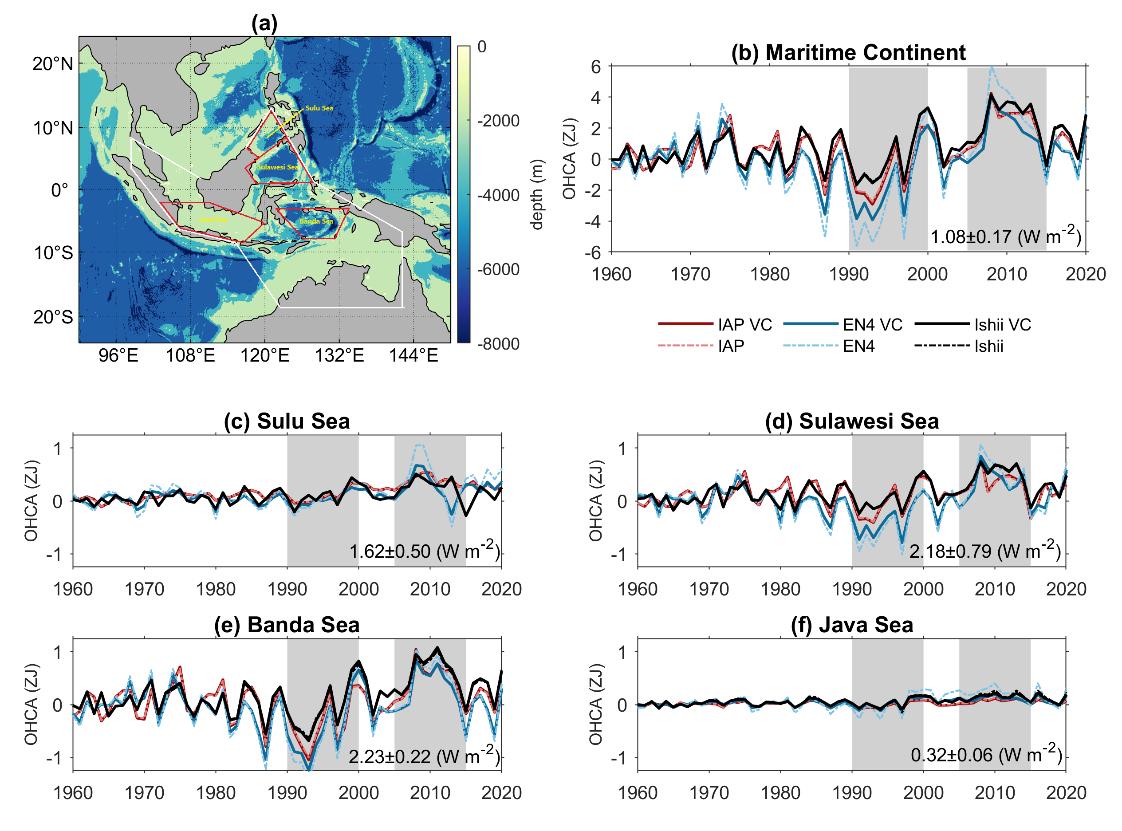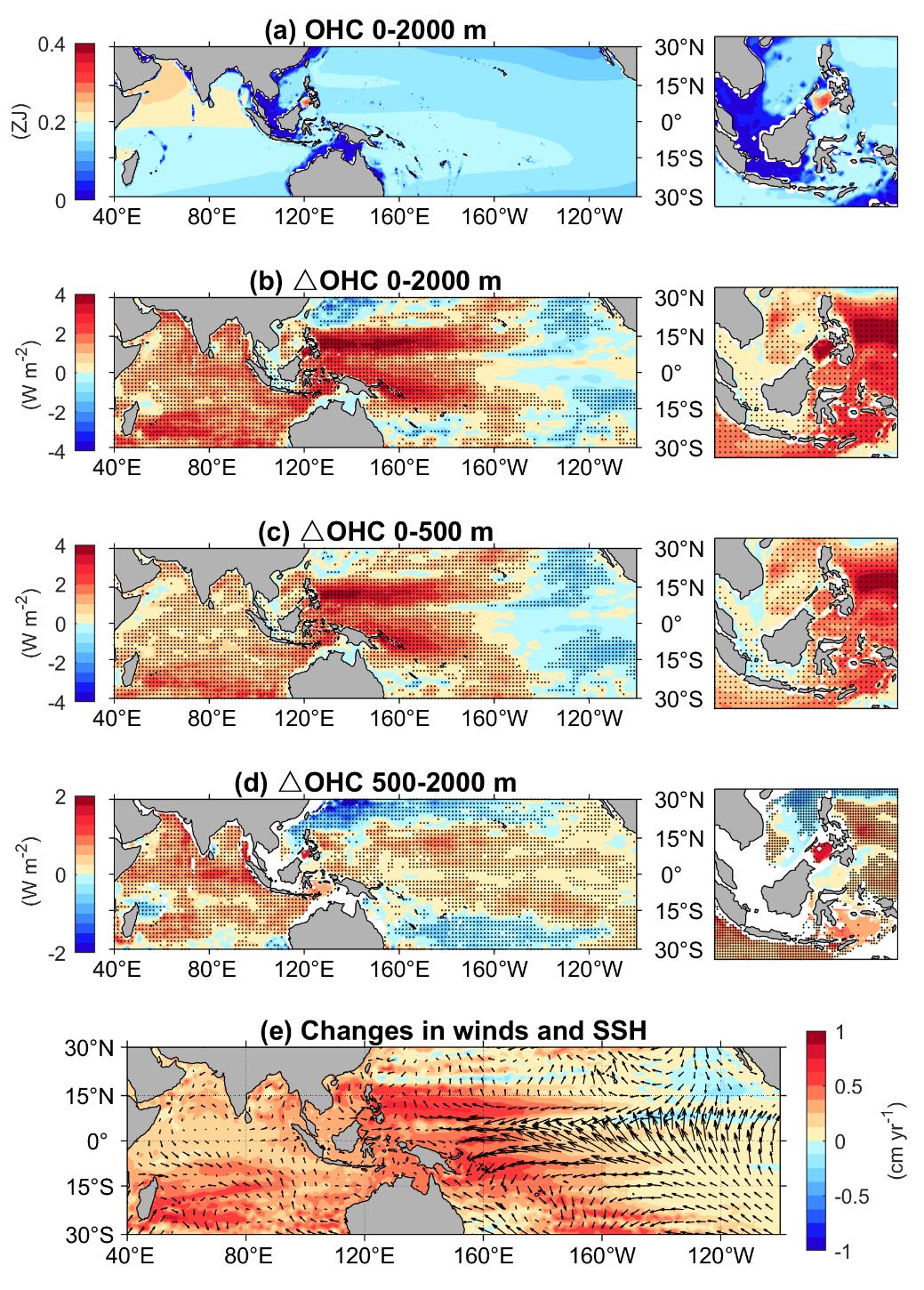The oceans primarily absorb the imbalance in Earth's energy caused by human-induced greenhouse gases. However, current ocean heat content (OHC) measurements don't fully close the global energy budget.
The marginal seas, especially in the Indo-Pacific convergence zone — a crucial link between the tropical Pacific and Indian Oceans — remain underexplored as heat storage areas.
Recently, the research team led by Prof. WANG Fan from the Institute of Oceanology of the Chinese Academy of Sciences (IOCAS) has made significant progress in quantifying the changes in OHC up to 2000 meters depth in the Maritime Continent region since the 1990s, uncovering the patterns and mechanisms of these changes.
The study was published in Geophysical Research Letters on Mar. 26.
To address the challenges of scarce temperature observations and complex terrain in marginal sea areas, the research team introduced a novel volume correction method for calculating OHC. Utilizing high-resolution bathymetric data from Earth's Topography and Bathymetry (ETOPO1) and applying a "nearest neighbor" approach, they accurately estimated the volume of complex terrain grid boxes. "This advancement allows for more precise estimations of OHC changes, enhancing our understanding of ocean warming," said JIN Yuchun, first author of the study.
This analysis, spanning from 1990 to 2015, revealed that the OHC in the Indo-Pacific convergence zone significantly increased by 2.65±0.46 ZJ (1.08±0.17 W m-2), surpassing the global and Pacific rates for the same period. The ocean's upper heat content rise was primarily influenced by anomalies in surface winds, with easterly deviations leading warm water to accumulate and penetrate into the Maritime Continent region. Notably, the Sulu Sea was pinpointed as a critical heat storage "hotspot", indicating more pronounced warming signals below 500 meters than in other regions, supported by winter observational data.
"This study enhances our understanding of the Maritime Continent's role in global climate change and offers crucial insights into protecting marine ecosystems against the backdrop of global warming," said Prof. WANG.

Fig. 1 (a) Bathymetry of the Maritime Continent (MC) region; (b-f) Time series of Ocean Heat Content Anomalies (OHCAs) for the MC, Sulu Sea, Sulawesi Sea, Banda Sea, and Java Sea.

Fig. 2 (a) Climatology of the 0-2000 m OHC. (b-d) △OHC between 1990-2000 and 2005-2015 periods for 0-2000 (b), 0-500 (c), and 500-2000 m (d). (e) Changes in winds (vectors; m s-1 yr-1) and SSH (color; in cm yr-1).
Jin, Y., Li, Y., Cheng, L., Duan, J., Li, R., & Wang, F. (2024). Ocean heat content increase of the Maritime Continent since the 1990s. Geophysical Research Letters, 51, e2023GL107526.
(Text by JIN Yuchun)
Media Contact:
ZHANG Yiyi
Institute of Oceanology
E-mail: zhangyiyi@qdio.ac.cn
(Editor: ZHANG Yiyi)

